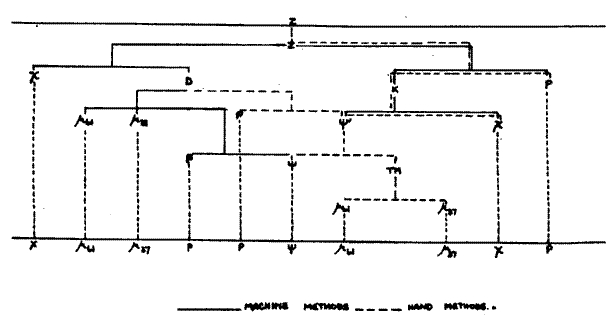General Report on Tunny
12B Page 18
about 4000 and for chi setting about 1000 letters
(b) 2nd Method.
Stage I. Mechanical solution of Z = Χ + D as in 1st method.
Stage II. Solution of motor patterns (or settings) from ΔD stream by statistical and mechanical means.
Stage III. Solution of D = P + Ψ'. Ψ' streams corresponding to the various possible Ψ patterns (or settings) are tried mechanically, the correct one being distinguished by the statistical recognition of P. It will be noticed that this is only possible after the motors have been broken (or set).
This method is entirely mechanical and, as soon as there were sufficient machines available, it became the general method of setting as soon as the motor patterns were found. This method was used for wheel-breaking, but only experimentally. For this reason the statistical breaking of motor patters from ΔD is discussed in the Appendix (92) and not in Part 2. The minimum length required for wheel-breaking and setting is rather greater than that required in the first method.
(c) 3rd Method.
Stage I. Solution of Z = K + P by means of depth or crib. Plain language for two messages in depth found by hand or a predetermined stretch of P is mechanically tried in various position of Z and the correct position distinguished by the statistical properties of ΔK.
Stage II. Solution of K = Χ + Ψ'. Various Χ-patterns (or settings) are tried by hand or mechanically and the correct one is distinguished by the statistical properties of ΔΨ'.
Stage III. Solution of motor from Ψ' as in 1st method.
This method (as far as depths are concerned) is the only method needing no machine help. Before the introduction of autoclave and the arrival of machines it was the general method of wheel-breaking and setting. Depths remained an important method of wheel-breaking on links without autoclave, though depths for setting became increasingly rare. Cribs provided a useful subsidiary method of wheel-breaking on all links. At least 100 letters of key were required for wheel-breaking.

Fig. 12 (I)
Back to General Report on Tunny. Contents.